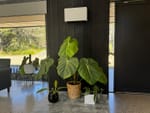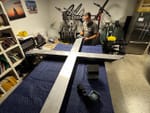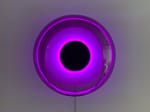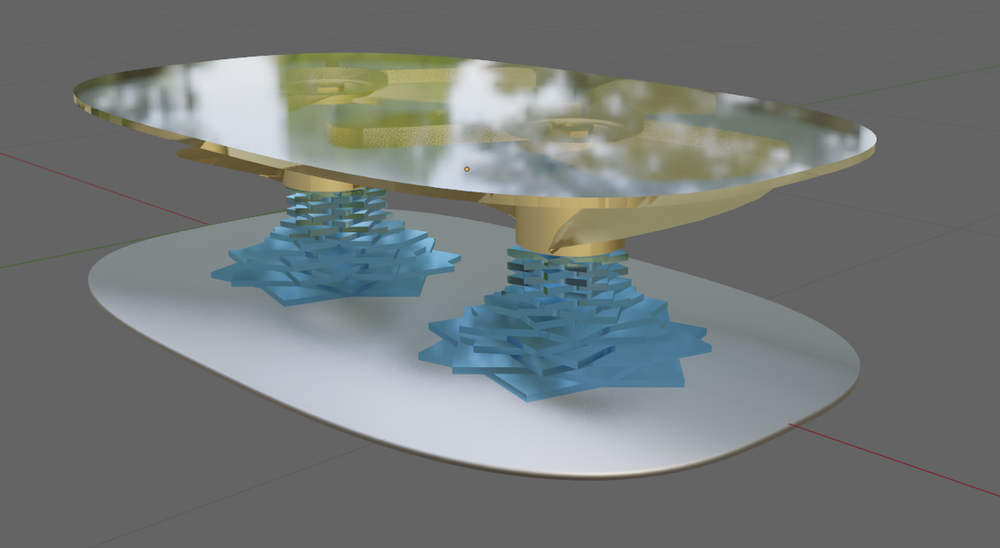
I was asked to design and quote on a propeller coffee table for a potential customer. They wanted a rectangle coffee table with 2 propellers for their boat/yacht.
With the context of where it will be used in mind, it made sense to me to design something using glass, aluminium and stainless steel, knowing that it will be exposed to ocean air. Marine grade stainless steel posts and an anodised aluminium base would last a long time before corrosion appears.
This was a great opportunity to put my new Blender (3D software) skills in to practice. I must admit when applying the knowledge from tutorials to an actual project you do brings to effect much quicker.
Even though the project is not going further, I now have a table design ready to go.
Design 1 Steel and bronze


The rectangular design of the glass top and aluminium base was my signature superellipse shape.
- Aluminium base - anodised to protect against corrosion (16mm thick, weight 27Kg)
- Stainless Steel posts - to brace the glass top and hold the propellers in place
- 12mm Low Iron glass - for increased clarity
- 3 or 4 blade propeller set
Design 2 “Glass Vortex”

With an average coffee table being about 400mm high, and the thickness of the propeller 150mm, there would remain 250mm of exposed steel post. I decided to create an alternative design where the exposed post would be covered with glass rings. These stacked rings would create a water vortex effect. As if the propellers were spinning and creating wash.
- Aluminium base - anodised to protect against corrosion (16mm thick, weight 27Kg)
- Stainless Steel posts - to brace the glass top and hold the propellers in place
- 12mm Low Iron glass - for increased clarity
- 3 or 4 blade propeller set
- Blue/Green glass stacks through steel posts to create a water vortex effect.


Option 3 Propeller side table
Since the project didn’t go ahead, I also offered a smaller single propeller side table.







